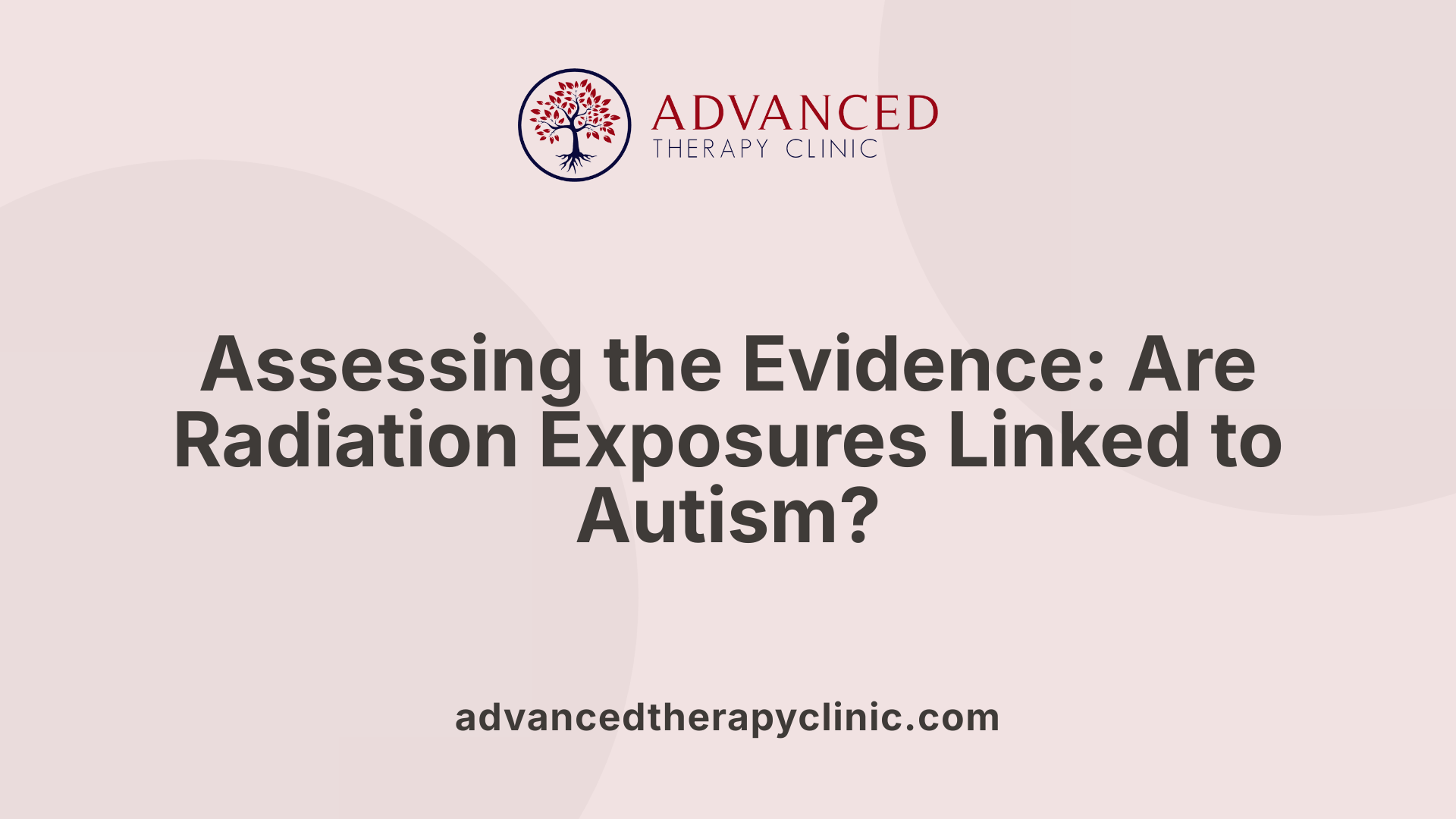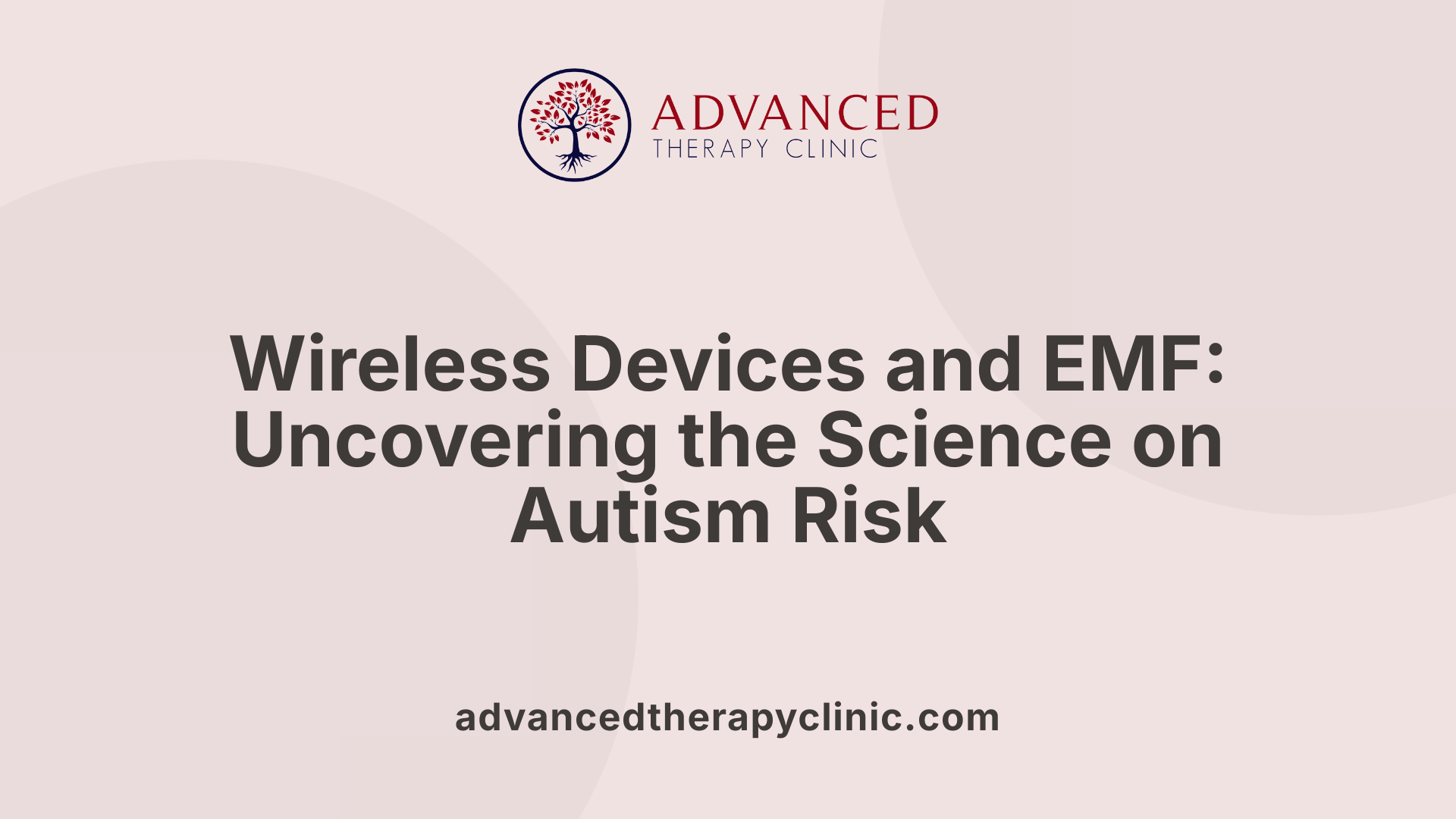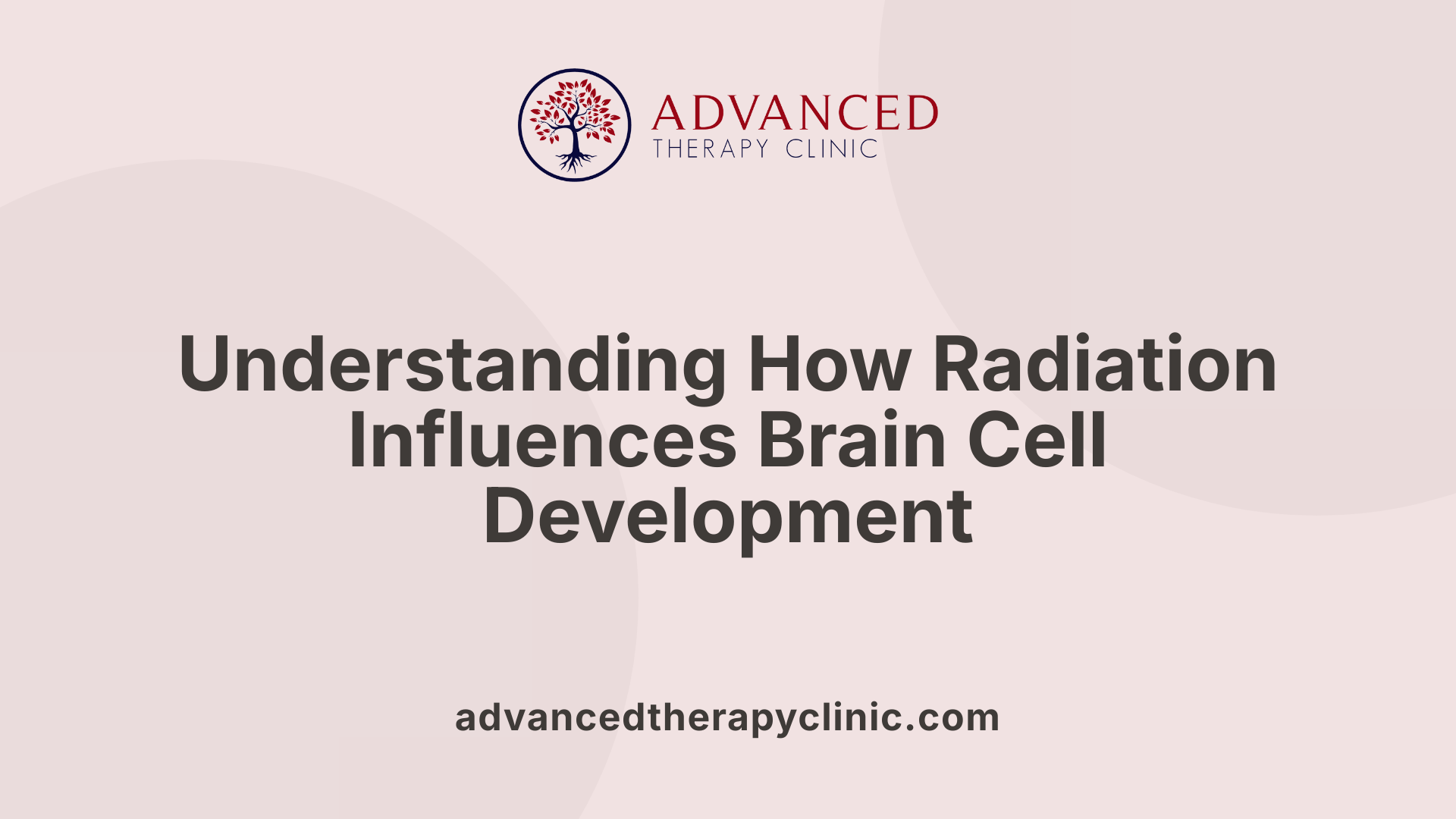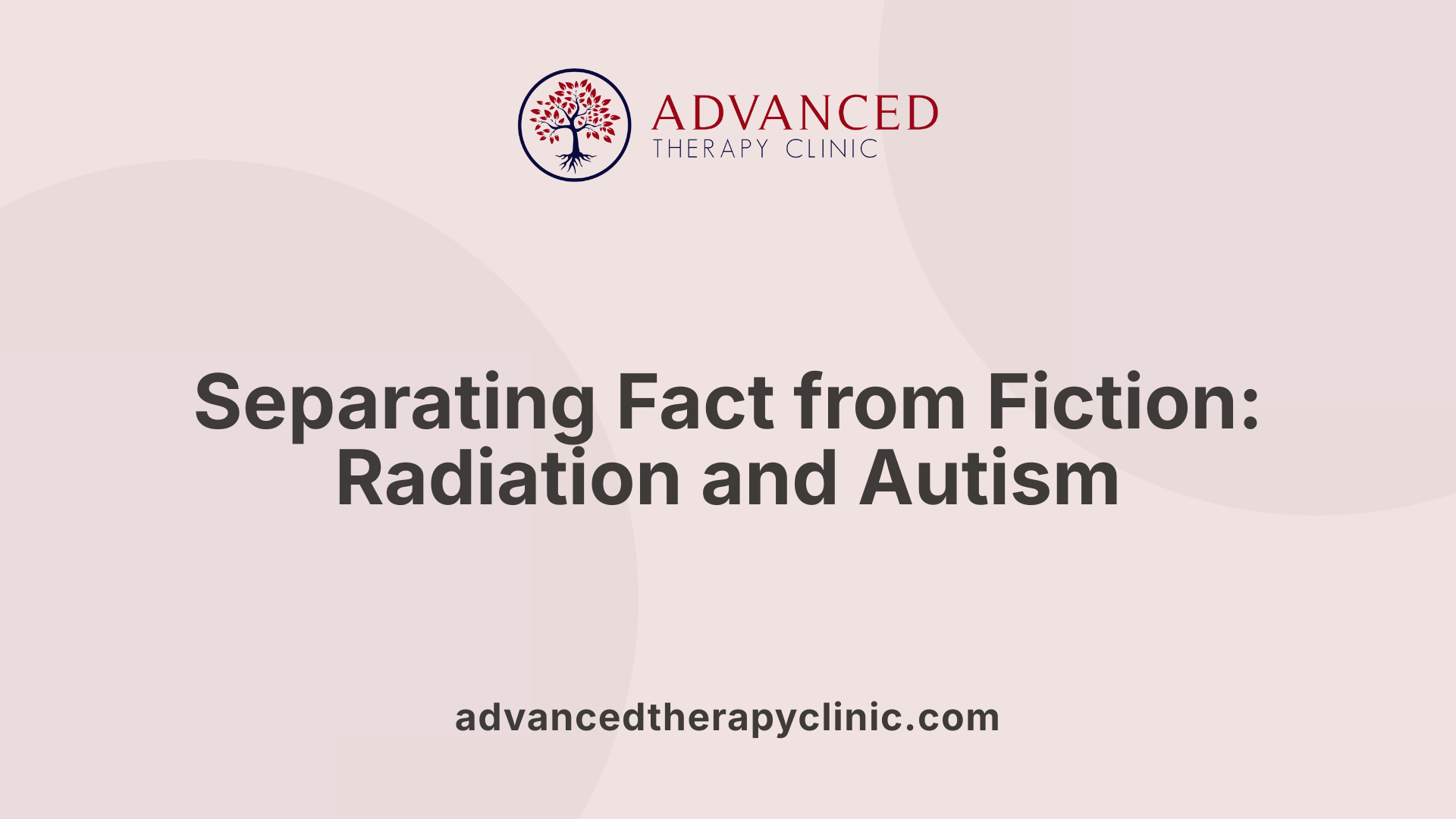Does Radiation Cause Autism?


Understanding the Complex Relationship Between Radiation Exposure and Autism
The question of whether radiation causes autism remains a topic of considerable scientific inquiry and public concern. Despite extensive research, definitive evidence connecting radiation exposure to autism spectrum disorder (ASD) has yet to be established. This article explores current scientific findings, biological mechanisms, and health guidelines, providing a comprehensive overview of what is known—and what remains uncertain—about the potential impact of radiation on neurodevelopment.
Evaluating Scientific Evidence on Radiation and Autism

What scientific evidence exists linking radiation exposure to autism spectrum disorder?
Currently, research on the potential link between radiation exposure and autism spectrum disorder (ASD) remains inconclusive. Most scientific studies have not established a direct cause-and-effect relationship between exposure to radiation and the development of ASD.
Some emerging research explores possible biological mechanisms. For instance, studies suggest that neuroinflammation and alterations in neurotransmitter systems could be involved in neurodevelopmental disruptions. There have been pilot studies investigating the use of electromagnetic fields, such as extremely low-frequency electromagnetic fields (ELF-EMF), as a form of therapy for children with ASD. In these studies, some children showed improvements in language abilities and behavioral symptoms, but these results have yet to be confirmed as causal or widely replicable.
Additionally, epidemiological research provides some indirect clues. A large cohort study conducted in Scotland found that higher maternal exposure to ultraviolet B (UVB) radiation during pregnancy correlated with a reduced risk of learning disabilities in children. This hints that vitamin D synthesis, influenced by UVB exposure, might play a role in neurodevelopment, suggesting that factors related to radiation could have complex effects.
Despite these findings, there is no definitive evidence that links radiation exposure directly to the onset of ASD. The existing studies highlight the need for more rigorous, controlled research to better understand any potential connections and underlying biological mechanisms.
For those interested in exploring this topic further, searching terms like
Wireless Devices, EMF, and Autism: What Does Science Say?

Impact of electromagnetic fields from wireless technology
Wireless devices, such as smartphones, tablets, and Wi-Fi routers, emit electromagnetic fields (EMF) in the radiofrequency (RF) range. These RF fields are a type of non-ionizing radiation, which means they lack enough energy to directly damage DNA or cause ionization in cells. The increasing presence of these devices in daily life has raised questions about their potential health effects, including their influence on neurodevelopmental conditions like autism spectrum disorder (ASD).
Can radiation from wireless devices, microwave, RF, or EMF be associated with autism spectrum disorder?
Currently, scientific evidence does not confirm a direct cause-and-effect relationship between exposure to wireless radiation and autism spectrum disorder. However, researchers are exploring how electromagnetic fields might influence brain development, particularly in infants and young children.
Some studies suggest that electromagnetic radiation could subtly affect neural activity, especially during critical developmental periods. For example, EMF exposure might interfere with calcium signaling in nerve cells or impact how neural networks form and calibrate. These processes are essential for cognitive and social development.
Research has also identified biological markers associated with autism, such as oxidative stress, mitochondrial dysfunction, and immune system disturbances. There is some speculation that electromagnetic fields could potentially influence these markers but conclusive clinical evidence remains elusive.
The prevalence of ASD has increased alongside the rise in wireless device use globally. Children absorb more electromagnetic radiation due to their thinner skulls and developing tissues. Despite this, existing safety guidelines do not specifically account for the vulnerability of young children. This situation prompts caution and encourages further investigation.
While more research is necessary to understand fully any possible links, current data underscore the importance of cautious exposure—especially for vulnerable groups like infants and pregnant women. Limiting unnecessary exposure to electromagnetic fields during early development could be a prudent measure until clearer scientific conclusions are reached.
Additional resources
For more insights into this topic, searching terms like 'effects of electromagnetic fields on neurodevelopment' can provide a broader understanding of ongoing studies and scientific debates. Experts continue to examine how environmental factors, including EMF, may contribute to neurodevelopmental outcomes, emphasizing the need for ongoing research and updated safety standards.
The Scientific Consensus and Expert Opinions
 Research shows that autism spectrum disorder (ASD) is influenced mainly by genetic factors. Studies estimate heritability at around 83%, highlighting the importance of inherited genes and mutations. These genetic changes include de novo mutations, copy number variations, and disruptions in specific genes related to brain development.
Research shows that autism spectrum disorder (ASD) is influenced mainly by genetic factors. Studies estimate heritability at around 83%, highlighting the importance of inherited genes and mutations. These genetic changes include de novo mutations, copy number variations, and disruptions in specific genes related to brain development.
Scientists also recognize that certain prenatal environmental factors can contribute to autism risk. Conditions such as maternal infections during pregnancy (e.g., rubella or cytomegalovirus), the use of specific medications like valproic acid, and autoimmune or inflammatory responses in expecting mothers have been linked to increased likelihood of autism. These factors may influence fetal brain development through epigenetic mechanisms, altering gene expression without changing DNA sequences.
Importantly, the question of radiation exposure causing autism has been extensively studied. There is no credible scientific evidence supporting this connection. Research conducted so far has not found Radiation to be a risk factor for autism, and the consensus within the scientific community remains clear.
Studies and expert opinions emphasize that genetics and prenatal environmental influences are the primary factors in autism development. Misconceptions about environmental risks, such as radiation, lack scientific backing and are not supported by current evidence from reputable sources.
Overall, understanding autism requires focusing on genetic patterns and prenatal conditions rather than unsupported environmental claims. This approach helps guide research, policy, and public understanding in a fact-based manner.
How Radiation Affects Neurodevelopment at the Cellular Level

How might radiation exposure influence neurodevelopment and contribute to autism?
Radiation exposure can significantly impact brain development by causing damage at the cellular level. One primary effect is DNA damage, particularly double-strand breaks, which are critical because they can impair the ability of neural stem cells to divide and differentiate properly. This disruption can hinder neurogenesis, especially in areas vital for cognitive and social functions such as the hippocampus and prefrontal cortex.
In response to radiation, cells activate repair pathways to fix their DNA. However, this process can sometimes lead to errors or incomplete repair, resulting in lasting genetic mutations. These changes may alter gene expression patterns crucial for normal neural development.
Additionally, radiation induces oxidative stress by generating reactive oxygen species (ROS). These highly reactive molecules damage cellular components, including lipids, proteins, and DNA. The oxidative stress activates inflammatory responses within the brain tissue, creating a hostile environment for developing neurons.
Chronic inflammation and oxidative damage can disrupt the processes of neural differentiation and maturation, essential steps in forming functional neural circuits. Furthermore, radiation effects extend beyond directly affected cells through bystander effects, where signals from damaged cells induce harm in neighboring healthy cells. Epigenetic modifications can also occur, leading to long-term changes in gene expression without altering the underlying DNA sequence.
Overall, these cellular and molecular disruptions can lead to structural brain abnormalities and functional deficits characteristic of autism spectrum disorder. While high doses of radiation cause obvious neural damage, low-dose exposure may also subtly influence neurodevelopment, increasing the risk of autism through complex, cumulative effects.
Risk During Pregnancy and Early Childhood
What is the impact of radiation exposure during critical developmental periods?
Exposure to radiation during pregnancy or early childhood is a topic of concern because these periods are vital for brain development and overall growth. Researchers have studied various types of radiation, including ionizing radiation and non-ionizing electromagnetic fields (EMF).
Current scientific evidence has not confirmed a direct link between radiation exposure during these sensitive times and a higher risk of autism. However, some studies suggest possible biological mechanisms where electromagnetic fields from sources like power lines and wireless devices could cause oxidative stress and DNA damage. Such effects have the potential to influence neurodevelopment in fetuses and young children.
The recent rise in autism diagnoses coincides with increased exposure to RF radiation, leading some scientists to consider environmental factors as possible contributors. Despite this correlation, most research on low-to-moderate doses of ionizing radiation shows limited evidence of a specific connection to autism.
In summary, biological plausibility exists that radiation could impact developing brains, but more detailed and rigorous research is needed to understand its role fully. People are encouraged to stay informed through reputable sources and consult healthcare providers when concerned about environmental exposures during pregnancy and early childhood.
Effects of prenatal radiation exposure on neurodevelopment
Searching for detailed insights? Look into studies focusing on how prenatal environmental factors, including radiation, might influence neurodevelopmental outcomes. Although no conclusive evidence links radiation to autism, ongoing research continues to explore potential risks and protective factors for children's health.
Distinguishing Scientific Facts from Misinformation

How can misinformation or speculation about radiation causing autism be distinguished from scientific evidence?
Evaluating claims about radiation and autism requires a careful look at the sources of information. Credible scientific evidence is primarily found in peer-reviewed studies that follow rigorous research standards. These studies are designed to minimize bias and provide reliable data.
Less trustworthy sources might include anecdotal reports, non-systematic reviews, or articles that rely on indirect or low-quality evidence. To avoid falling for misinformation, it’s important to consult reputable health organizations such as the Centers for Disease Control and Prevention (CDC) and the World Health Organization (WHO). These organizations review existing research and summaries, offering guidance based on scientific consensus.
Experts have stated that current research does not support a link between electromagnetic radiation from wireless devices and autism or ADHD. The increase in autism diagnoses over recent decades is mainly attributed to broader diagnostic criteria and increased awareness, not environmental radiation.
In summary, differentiating facts from speculation involves examining the quality of evidence, prioritizing scientific consensus, and consulting trusted health authorities. This approach helps ensure understanding based on verified, reliable information, rather than misconceptions or unfounded fears.
Concluding Thoughts on Radiation and Autism
While the biological mechanisms by which radiation could theoretically influence neurodevelopment exist, current scientific evidence does not confirm a causal link between radiation exposure and autism spectrum disorder. The majority of research emphasizes genetic and prenatal environmental factors, and credible health agencies recommend precautions mainly for general radiation safety rather than autism prevention. Continued research is essential to clarify long-term effects, but at present, concerns about radiation causing autism should be balanced with scientific consensus and evidence-based guidelines.
References
- Complete List of Conditions | Compassionate Allowances - SSA
- Medical and health information | MedicalNewsToday
- JAMA Network | Home of JAMA and the Specialty Journals of the ...
- A possible association between fetal/neonatal exposure ... - PubMed
- Electromagnetic fields exposure on fetal and childhood abnormalities
- A possible association between fetal/neonatal exposure to ...
- Antenatal exposure to solar radiation and learning disabilities - Nature
Recent articles

The Importance of Speech Therapy for Communication Development
Enhancing Communication: How Speech Therapy Shapes Childhood Development

How Behavior Analysis Helps Children Learn to Follow Instructions
Unlocking Skills: The Power of Behavior Analysis in Teaching Children to Follow Instructions

What Is Speech Fluency?
Understanding the Essentials of Speech Fluency and Its Disorders

What Is Speech Fluency?
Understanding the Essentials of Speech Fluency and Its Disorders

Teaching Writing to Students with Autism
Unlocking the Potential: Effective Writing Instruction for Students with Autism

Teaching Writing to Students with Autism
Unlocking the Potential: Effective Writing Instruction for Students with Autism


